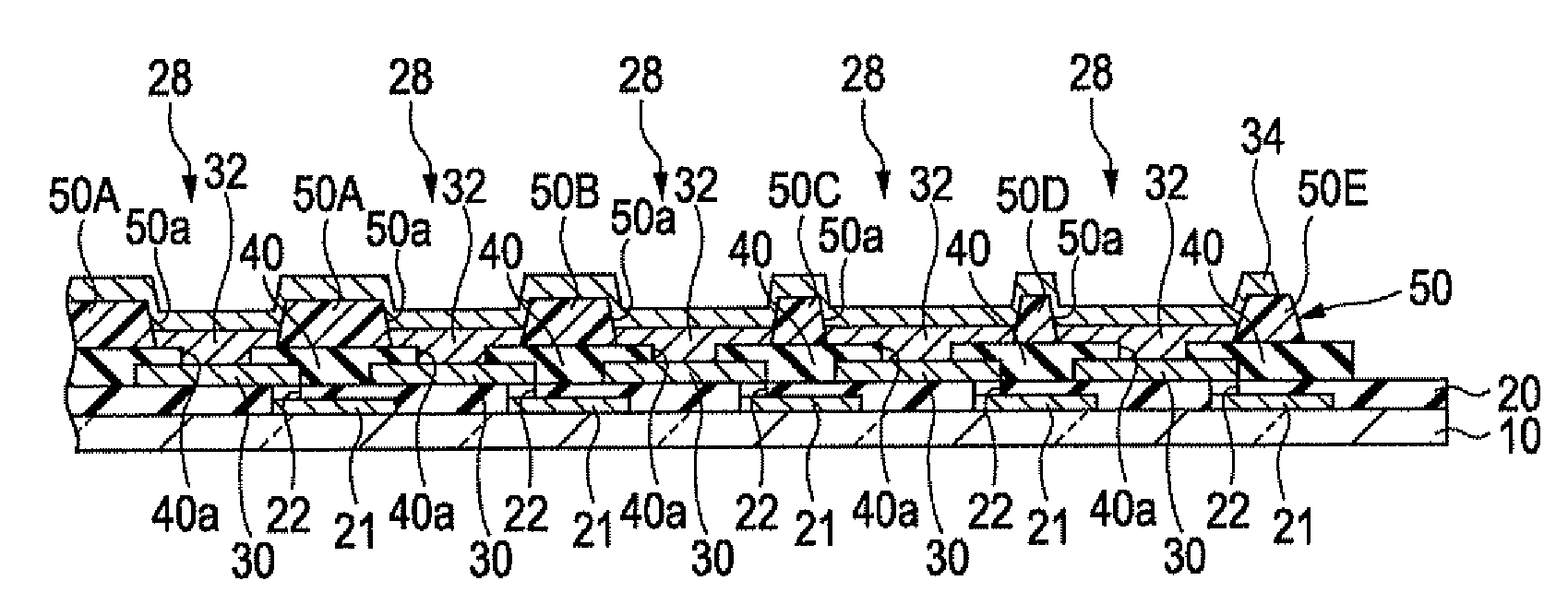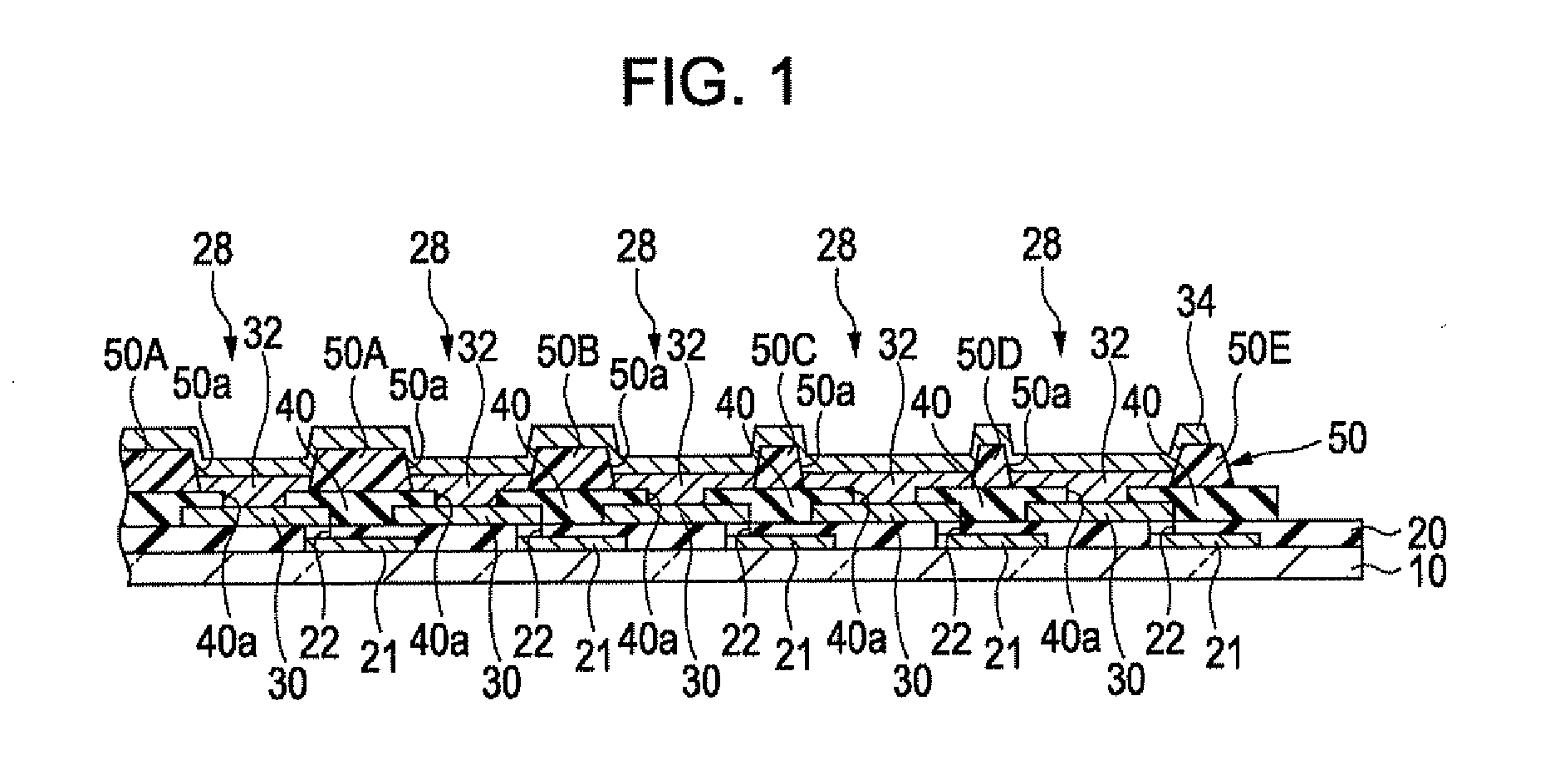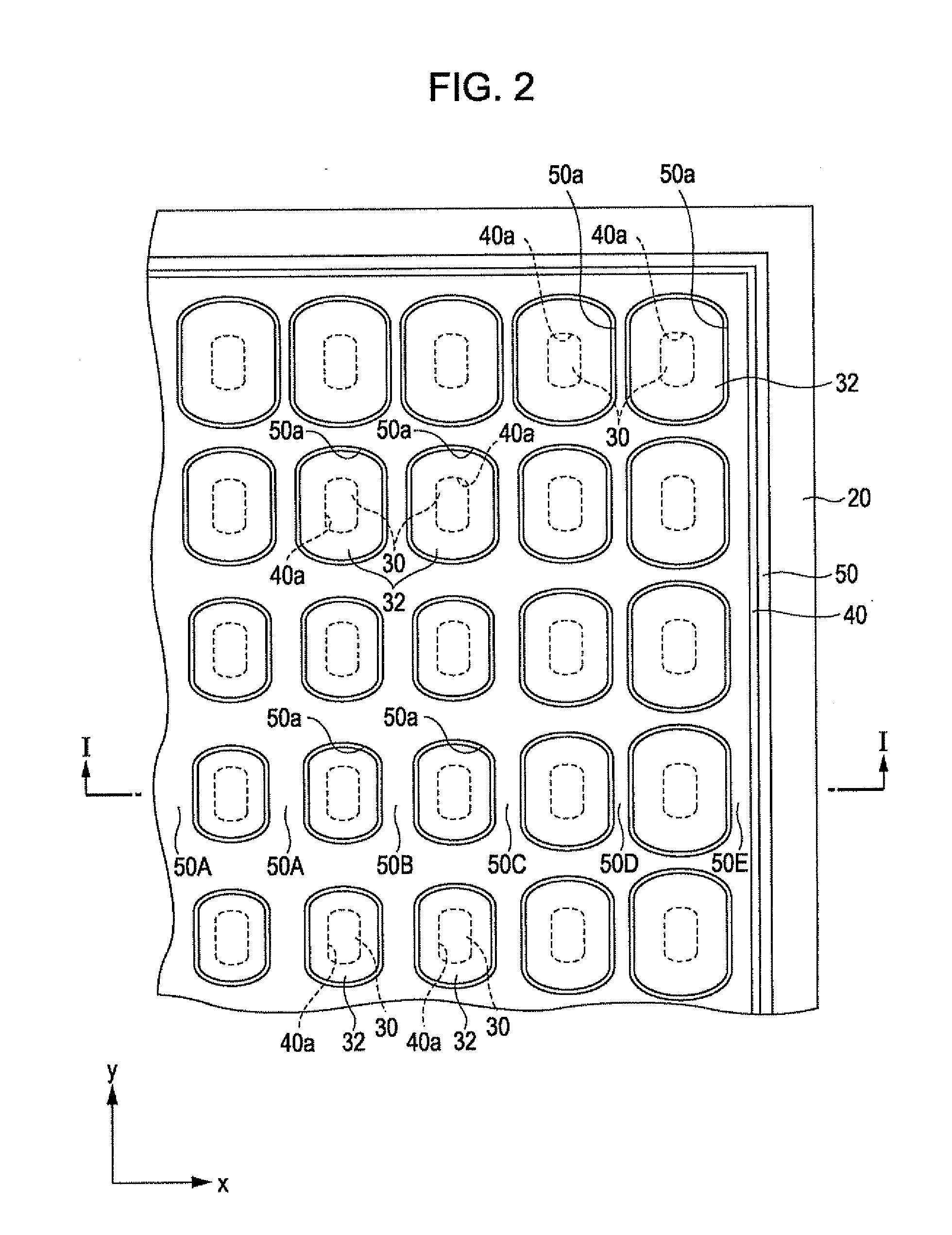Organic electroluminescent apparatus and elctronic appratus
- Summary
- Abstract
- Description
- Claims
- Application Information
AI Technical Summary
Benefits of technology
Problems solved by technology
Method used
Image
Examples
first embodiment
[0035]FIG. 1 is a cross-sectional view of an organic EL apparatus according to a first embodiment of the invention. FIG. 2 is a plan view of the organic EL apparatus without a counter electrode 34. More specifically, FIG. 1 is a cross-sectional view taken along the line I-I in FIG. 2.
[0036]Referring to FIG. 1, the organic EL apparatus includes a substrate 10 and an insulator layer 20 disposed on the substrate 10. The insulator layer 20 is composed of silicon oxide or silicon nitride, for example. A plurality of thin film transistors (TFTs) 21 and wires (not shown) for supplying power to a plurality of light-emitting devices (organic EL devices) 28 are embedded in the insulator layer 20.
[0037]The light-emitting elements 28 are provided on the insulator layer 20. Each of the light-emitting elements 28 includes a positive electrode, a negative electrode, and an organic layer (organic thin film) held therebetween. More specifically, the light-emitting element 28 includes an individual p...
second embodiment
[0063]FIGS. 7A to 7D are cross-sectional views of a color filter panel showing a method for manufacturing a color filter panel according to a second embodiment of the invention. FIG. 8 is a plan view of the color filter panel as a finished product. More specifically, FIGS. 7A to 7D are each a cross-sectional view taken along the line VII-VII in FIG. 8. The color filter panel includes a substrate 100 composed of a transparent material such as glass or transparent resin, color filters 104 (104R, 104G, and 104B) provided on the substrate 100, and a bank pattern (partition pattern) provided on the substrate 100 and defining the color filters 104. The suffixes R, G, and B given to the color filters 104 indicate colors of light that are transmitted through the respective color filters 104. Namely, the color filters 104R transmit red light, the color filters 104G transmit green light, and the color filters 104B transmit blue light.
[0064]The bank pattern has a two-layer structure including ...
PUM
 Login to View More
Login to View More Abstract
Description
Claims
Application Information
 Login to View More
Login to View More - R&D
- Intellectual Property
- Life Sciences
- Materials
- Tech Scout
- Unparalleled Data Quality
- Higher Quality Content
- 60% Fewer Hallucinations
Browse by: Latest US Patents, China's latest patents, Technical Efficacy Thesaurus, Application Domain, Technology Topic, Popular Technical Reports.
© 2025 PatSnap. All rights reserved.Legal|Privacy policy|Modern Slavery Act Transparency Statement|Sitemap|About US| Contact US: help@patsnap.com



